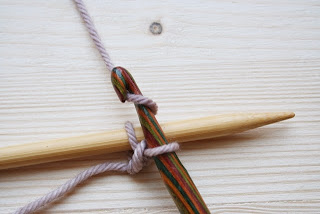Just a quick shout-out to let you know that....
wtorek, 19 stycznia 2016
Annual Pattern Sale
Just a quick shout-out to let you know that....
Categories:
Patterns
środa, 4 listopada 2015
Magic adjustable ring tutorial
Categories:
tips & tricks,
tutorial
poniedziałek, 14 września 2015
Kitchener Stitch Tutorial
Kitchener Stitch is for grafting two edges
Categories:
tutorial
niedziela, 13 września 2015
Make Short Rows Neater With This Japanese Technique Tutorial
The standard wrap and turn works well for most short row shaping, but even the most professional knitter can still leave a loop at the back that sticks out a little.
Short rows can add smooth, even curves to anything from a sleeve to a bust, but wrap and turn isn’t always the best option.
The solution? A Japanese knitting tutorial that might forever change the way you shape those short rows. Ready to learn one of the Japanese knitting techniques that will forever change your short rows? Let’s do it!
I find that using scraps of yarn in JSR technique work the best but if there are too many turns the more handy solution is to use one long scrap yarn, which is placed at every short row turn, and then pulled off when working with saved wrap:
Categories:
tips & tricks,
tutorial
czwartek, 27 sierpnia 2015
Give a texture to your knitwear by using pleats or "folds"
Here's the tutorial how to make the horizontal pleats,
shown by using two ways of marking the designated row / round: with a lifeline or with reverse stockinette stitch.
Click on the photo (with right button of your mouse and the choose "show me the picture") to see it larger:
Categories:
tips & tricks,
tutorial
Lateral Braid as a way to decorate your knitwear and more...
It can be used to decorate and give a polish to the knitted piece with no doubth.
Although I found it very helpful as a way to tighten stitches in
in a place they could get veeery sloppy. Lateral Braid can be used as a prevention of folding as well.
One little braid and so many possibilities...
Here's the tutorial for Lateral Braid (click on the photo to see it larger):
Here is tutorial for Lateral Braid knitted across whole row, although it can be made around too (click on the photo to see it larger):
Here is tutorial for Lateral Braid knitted in between other stitches:
Categories:
tips & tricks,
tutorial
niedziela, 19 kwietnia 2015
Provisional CO & Tubular CO for 2x2 rib
Categories:
tips & tricks,
tutorial
Subskrybuj:
Posty (Atom)











































